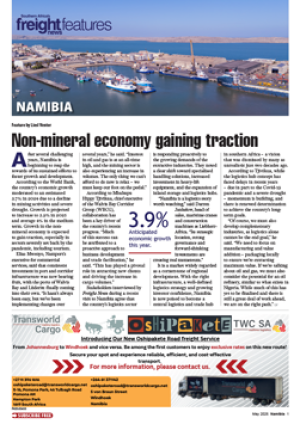BETTER UTILISATION of straddle carriers has resulted in a marked speeding up of container handling at Durban's container terminal, according to new Portnet container manager Sithembiso Mthethwa.
Until now the container terminal has been averaging 15 container moves an hour, well below the average 25 moves/hour recorded at some overseas terminals.
The system in use by Portnet required a road haulier to pick up teus (twenty foot equivalent units) from a quayside crane and reposition them outside a stacking area from which point one of Durban's 53 straddle carriers would take over to place the boxes in the appropriate stacks. The reverse would apply for ship loading. This led to delays as containers were transferred from haulier to straddle carrier.
According to Mthethwa under the new system, initially introduced at quay 205 on a trial basis, straddle carriers now collect the boxes from the crane and move them directly to the stacks. In the reverse direction they take the containers from the stacks to the back route of the cranes.
The results have proved encouraging, with up to 27 moves an hour becoming possible when working with fully cellular vessels.
This simple operation means that bottlenecks are avoided, the average handling time is considerably improved, and the road hauliers are now available for redeployment elsewhere.
The intention is to introduce these changes immediately in the remainder of the terminal. But it remains essential that we are fed accurate information from the shipping lines and agents for this system to work, says Mthethwa.
